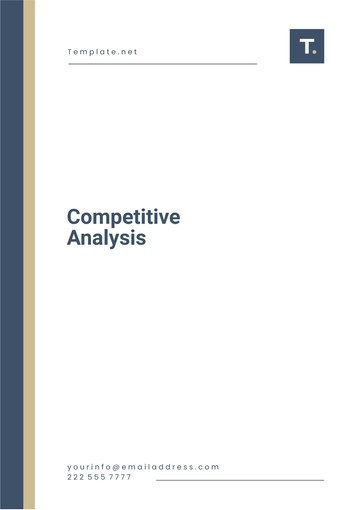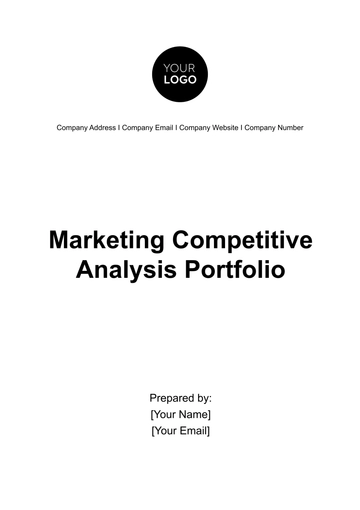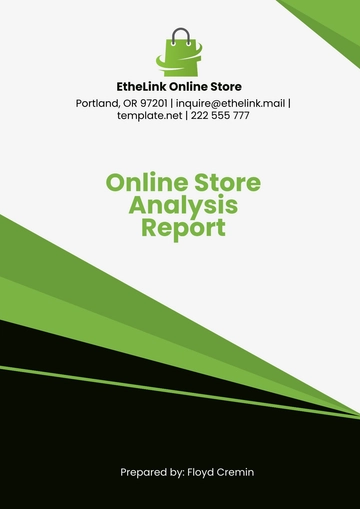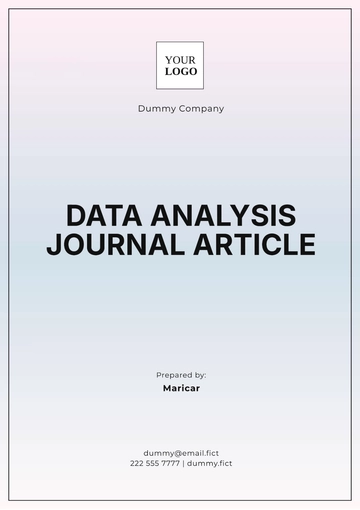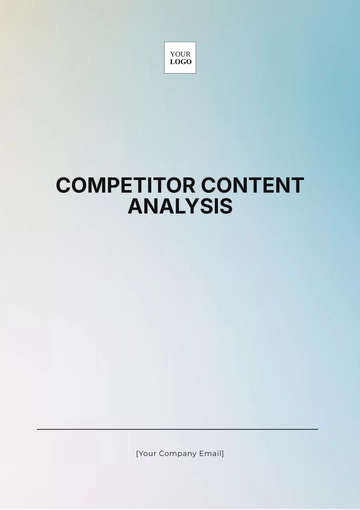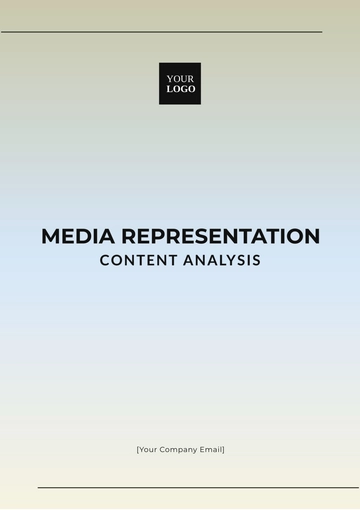Free Advertising Campaign Analysis

I. Introduction
In the evolving world of advertising, [Your Company Name] has consistently aimed to be at the forefront, leveraging cutting-edge strategies to connect with audiences. This report delves into our latest advertising campaign, which was designed to be a transformative journey in enhancing brand presence and customer engagement. Through a multi-platform approach, the campaign sought to create a resonant and memorable brand experience, setting a new benchmark in the advertising industry.
II. Executive Summary
The campaign's innovative approach melded traditional and digital media channels, targeting a broad spectrum of demographics to optimize overall reach and efficacy. Key objectives of the campaign included augmenting brand awareness, increasing website traffic, enhancing customer engagement, and boosting sales figures. The campaign, running from January to March 2050, was marked by its creative use of various platforms such as digital media, traditional media, and outdoor advertising, each playing a pivotal role in achieving the campaign’s goals.
III. Campaign Overview
The following section provides an in-depth overview of the company's recent advertising campaign. This segment details the strategic approach, objectives, duration, target audience, platforms used, key themes and messages, and the composition of the creative and technical team.
A. Strategic Approach
[Your Company Name]'s advertising campaign was crafted with a focus on innovative storytelling, digital integration, and audience engagement. We aimed to establish a strong emotional connection with the audience, ensuring that the brand's message resonated across various consumer segments.
B. Objectives
Amplify the brand's visibility and recognition in the market.
Foster deeper interaction and involvement with both potential and existing customers.
Boost website visits and convert these interactions into tangible sales increases.
Create a lasting impact that translates into long-term customer loyalty.
C. Duration
The campaign was executed over a three-month period, from January to March 2050, allowing for sufficient time to penetrate the market and gather meaningful data on performance metrics.
D. Target Audience
A diverse demographic was targeted, with particular focus on millennials and Generation Z, who are known for their significant online presence and purchasing power. However, efforts were also made to appeal to older generations through traditional media channels.
E. Platforms Used
A hybrid approach was taken in platform selection to maximize reach and effectiveness:
Digital Media: Leveraging social media platforms, websites, and online advertisements. This included innovative use of video content, influencer partnerships, and interactive online campaigns.
Traditional Media: Utilizing television, radio, and print media to ensure coverage across a broader audience, including those less active online.
Outdoor Advertising: Implementing eye-catching billboards and transit advertisements in key urban and suburban areas, designed to capture attention and generate buzz.
F. Campaign Themes and Messages
The campaign's messaging was centered around themes of innovation, reliability, and customer-centricity, reflecting [Your Company Name]'s core values. The creative content was tailored to be impactful, relatable, and memorable, with each platform featuring customized messages to suit the medium and target audience.
G. Creative and Technical Team
A team of skilled professionals, including creative directors, digital marketers, graphic designers, and data analysts, collaborated to bring this campaign to life. External agencies were also involved for specialized tasks like media buying and market research.
IV. Campaign Performance Analysis
This section delves into the quantitative and qualitative aspects of the campaign's performance, providing a detailed evaluation of its effectiveness against set objectives. Using a range of metrics and data analytics tools, we have compiled a comprehensive assessment of how the campaign resonated with the target audience and influenced market dynamics.
A. Key Performance Indicators (KPIs)
The campaign's success was measured against specific KPIs, chosen for their relevance to our core objectives. The following data presents these indicators alongside our targets and actual achievements, offering a clear view of the campaign's impact:
B. Audience Reach and Engagement
We also analyzed the reach and engagement across different platforms to understand how the audience interacted with the campaign. This data is crucial for identifying the most effective channels and for guiding future marketing efforts:
C.Budget Allocation and ROI
The campaign's financial performance is analyzed through budget allocation and ROI. This provides insight into the cost-effectiveness of each platform and the overall financial success of the campaign:
Platform | ROI |
Digital Media | 20% |
Traditional Media | 15% |
Outdoor Advertising | 10% |
D. Analysis Summary
The campaign successfully surpassed its KPI targets, with digital media emerging as the most effective channel in terms of engagement and ROI. Traditional media maintained its relevance, contributing significantly to brand awareness, while outdoor advertising played a key role in enhancing brand presence in strategic locations. These results underline the effectiveness of a multi-platform approach and provide valuable insights for future campaign planning.
V. Recommendations
Based on the comprehensive analysis of the campaign's performance, the following strategic recommendations are proposed to optimize future advertising endeavors for [Your Company Name]. These suggestions aim to build upon the successes and learnings from the recent campaign, ensuring continued growth and stronger market presence.
Increase Focus on Digital Media: Given the high engagement and ROI achieved through digital channels, it is advisable to allocate a larger portion of the budget to these platforms. This should include expanding into emerging social media platforms, investing in AI-driven targeted advertising, and exploring innovative digital marketing technologies.
Enhance Integration of Interactive Elements: To increase engagement, particularly in outdoor advertising, integrating interactive elements such as QR codes, augmented reality experiences, or interactive digital billboards can create more memorable and engaging consumer interactions.
Refine Targeting Strategies: Utilize advanced analytics and customer data to refine targeting strategies. This approach will help in delivering more personalized and relevant content to different audience segments, thereby improving engagement and conversion rates.
Strengthen Omni Channel Presence: Develop a more cohesive omnichannel strategy that seamlessly integrates the messaging and branding across all platforms. This will provide a unified brand experience to customers, irrespective of the channel they engage with.
Leverage Video Content: Given the high engagement rates with video content observed during the campaign, increasing investment in video marketing across various platforms, including social media and traditional media, can further enhance brand visibility and engagement.
Sustain Traditional Media Efforts: Despite the shift towards digital, traditional media remains vital for comprehensive market coverage. Tailoring traditional media content to complement digital campaigns can create a synergistic effect, maximizing overall campaign impact.
Community and Influencer Engagement: Continue to build relationships with key influencers and community leaders to amplify brand message and credibility. Leveraging these partnerships can lead to more organic and wide-reaching brand promotion.
Regular Monitoring and Adaptation: Implement a system for regular monitoring and rapid adaptation of strategies based on real-time data and market trends. This will ensure the campaign remains relevant and effective throughout its duration.
Employee Advocacy Programs: Encourage employees to become brand ambassadors, as their authentic voices can significantly enhance the brand's credibility and reach.
Sustainability and Social Responsibility: Integrate messages of sustainability and social responsibility into the campaign. This not only reflects well on the brand's values but also resonates with the growing consumer preference for environmentally conscious and socially responsible brands.
VI. Future Outlook
As [Your Company Name] moves forward, the insights gained from the recent campaign provide a strong foundation for navigating these changes. Embracing innovation, focusing on digital transformation, and maintaining a commitment to adaptability will be crucial for future success.
In the near term, the company should focus on harnessing emerging technologies such as AI and machine learning for more sophisticated audience targeting and personalization. Additionally, exploring new platforms and formats, particularly in the realm of immersive and interactive media, will be key to staying ahead in a competitive market.
Long-term strategies should include a steadfast commitment to brand values, particularly in areas of sustainability and social responsibility, which are increasingly important to consumers. Furthermore, cultivating a strong brand community and loyal customer base will provide a significant competitive edge.
Advertising Templates @ Template.net
- 100% Customizable, free editor
- Access 1 Million+ Templates, photo’s & graphics
- Download or share as a template
- Click and replace photos, graphics, text, backgrounds
- Resize, crop, AI write & more
- Access advanced editor
Maximize your campaign's impact with the Advertising Campaign Analysis Template from Template.net. This editable and customizable template offers a comprehensive framework for evaluating the effectiveness of your advertising efforts. Fine-tune your analysis with precision, editable in our AI Editor tool, enabling data-driven decisions for future campaigns. Essential for marketers seeking to enhance performance and ROI.
